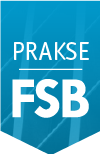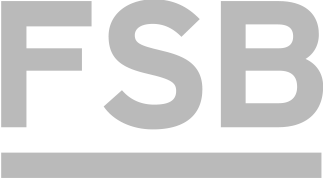International Exchange
Course details
Student Mobility > Programmes and Courses > Courses in English > Course detailsAssembly Automata
- Teaching: Completely taught in English
- ECTS: 5
- Level: UnderGraduate
- Semester: Winter
- Prerequisites:
- Load:
Lectures Exercises Laboratory exercises Project laboratory Physical education excercises Field exercises Seminar Design exercises Practicum 30 30 0 0 0 0 0 0 - Course objectives:
- Gathering of necessary knowledge for the analysis of automated assemblability of the products, selecting of standard and design of non-standard components for the machinery, integration of components into the system, programming and control of the system.
- Student responsibilities:
- Grading and evaluation of student work over the course of instruction and at a final exam:
- Performed on the basis of: - two periodic written examinations, 50 %; - the project, 40 %; - monitoring the presence and commitment of students, 10 %. In the event that a student does not pass all periodic written examinations, but neatly fulfills other obligations, the student may access written and oral exam.
- Methods of monitoring quality that ensure acquisition of exit competences:
- Coverage of quality: - immediately in the classroom, in direct communication with the students (student questions and discussion); - periodically, according to the processed education content, by grading of written examinations and project; - exposition/discussing of results (scores) - instructing students how to achieve better results.
- Upon successful completion of the course, students will be able to (learning outcomes):
- After a successful completion of the course, for a product, a student will be able to: - design a product by a computer; - critically assess the assemblability of a product for automatic assembly; - predict components of an automatic assembly process; - choose and/or design principal technical solutions of assembly equipment; - compare the variants of the process and technical solutions and recommend the most suitable; - design an integrated automatic assembly system by a computer.
- Lectures
- 1. Introduction. Product design for assembly - DFA method for automatic and robotic assembly.
- 2. Automatic assembly process: definitions, symbols. Automatic assembly system planning methodology.
- 3. Process planning for automatic assembly.
- 4. Process planning for automatic assembly based on disassembly.
- 5. Elements of automatic assembly systems: containers, mechanical feeders.
- 6. Vibratory feeders. Robotic and vision system feeders.
- 7. Feed tracks. Escapements.
- 8. Manipulators and industrial robots for assembly.
- 9. Grippers and clamping devices.
- 10. Transport equipment. Vision systems.
- 11. Force and torque sensors. Other devices.
- 12. Programming and control of assembly machines.
- 13. Programmable logic controllers.
- 14. Software support for designing, programming and control of automated assembly systems.
- 15. Investment and assembly cost calculation.
- Exercises
- 1. Defining of student project. Product design for assembly - DFA method for automatic and robotic assembly.
- 2. Product design for assembly - DFA method for automatic and robotic assembly.
- 3. Process planning for automatic assembly - example.
- 4. Process planning for automatic assembly - student work.
- 5. Calculation and selection of standard components for automatic assembly systems.
- 6. Design of non-standard system elements using CAD.
- 7. Design of non-standard system elements using CAD.
- 8. Assembly system design -- concept.
- 9. Computer design and simulation of assembly system.
- 10. Computer design and simulation of assembly system.
- 11. Computer design and simulation of assembly system.
- 12. Computer design and simulation of assembly system.
- 13. Programmes for Programmable Logic Controller: statement list, ladder logic -- examples.
- 14. Programmes for Programmable Logic Controller: statement list, ladder logic -- student work.
- 15. Robot programming.
- Compulsory literature:
- G. Boothroyd: Assembly automation and product design, CRC Press, 2010.
S. Y. Nof, W. E. Wilhelm, H.-J. Warnecke: Industrial Assembly, Chapman & Hall, 1997.
A. Redford, J. Chal: Design for assembly: Principles and practice, ISBN 0-07-7078381, McGraw Hill, 1994. - Recommended literature:






